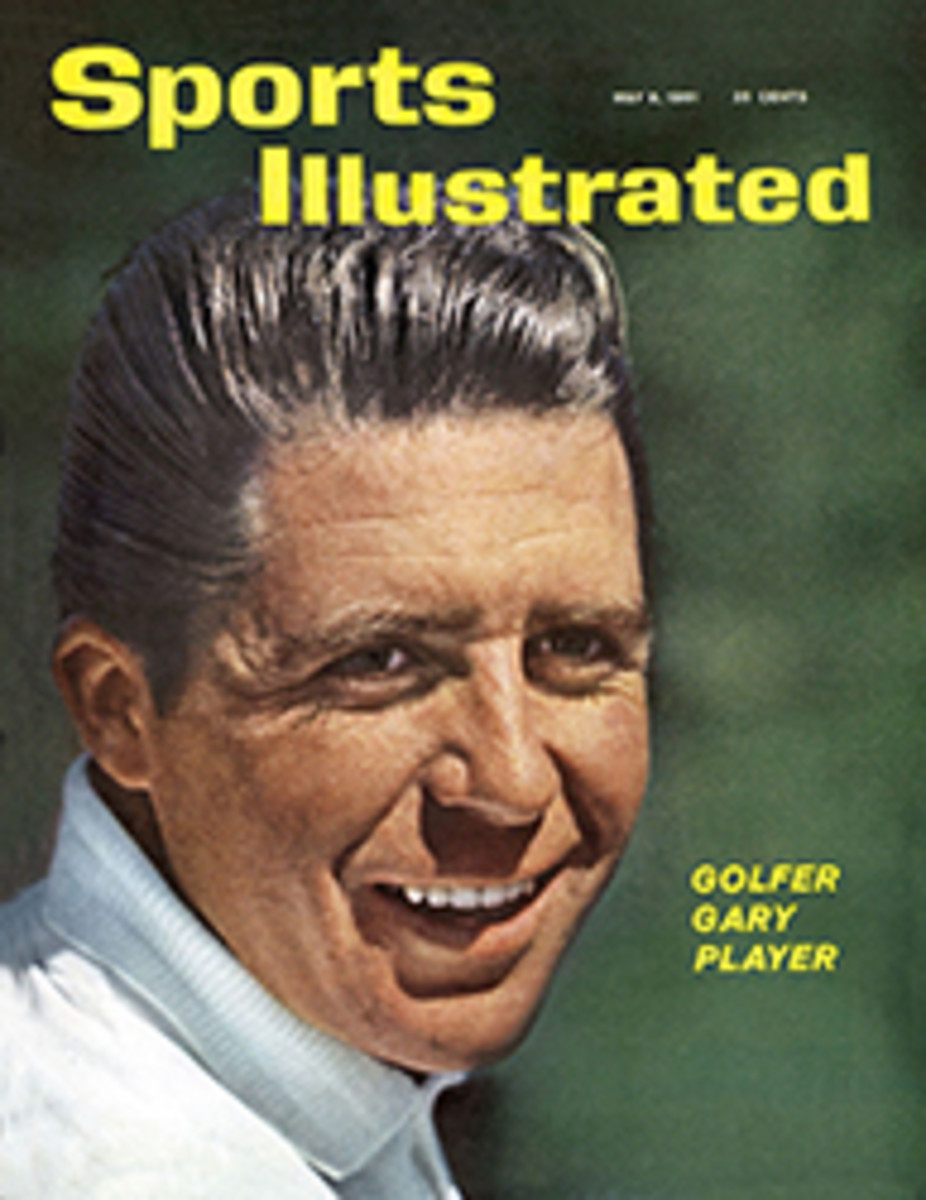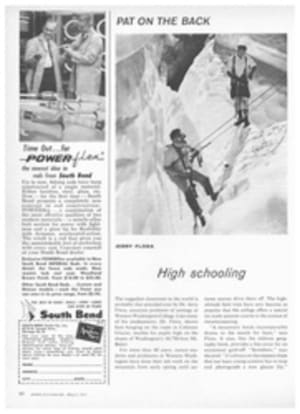
The Classic: sweat, misery and cash
The chorus of complaint raised by disgruntled bowlers during the Petersen Classic—America's most preposterous bowling tournament—is as formidable as the list of prizes the Classic offers. One complaint is that there is so much oil on the alleys the ball can barely reach the pins. "A man could drown out there," the bowlers say. Another is that the pins themselves are really logs. "They use trees but they don't remove the roots." Still another is that the very atmosphere of the ancient arena where the Petersen is rolled throws a man off his game. "What are they trying to do?" the bowlers wail. "Push the sport back 20 years?"
This last complaint is not without basis. In more modern establishments, where bowlers are offered inducements that include fashion shows, free buffets and child psychologists, alleys are called lanes. At the Petersen, where bowlers are offered only sweat and tears—plus cold cash—alleys are called alleys.
The Petersen is held on the second floor of a shabby-walled, musty-aired building on Chicago's dingy-gray South Side, and it admittedly belongs to a bygone age of bowling. Yet its fat prizes perennially attract bowlers from all over the country. This 51st Petersen, moreover, is the biggest and the richest thus far. A total of 12,768 bowlers, each of whom has paid a $37 entry fee, are vying for $331,968 in prizes. They come into Chicago for a day, roll eight games, and then go home. If they score high enough in a particular category, they sweat it out at home—hoping that subsequent bowlers won't score higher. When the six-month-long Petersen ends, on June 25, and the prizes are handed out, one of every three competitors is likely to earn some cash. Most important, the Classic's top scorer will win $27,500—tournament bowling's largest prize.
This fantastic tournament was founded in 1921 by a genial reactionary named Louis Petersen. He envisioned the Classic as revealing, not how high a man could score, but how well he could bowl under adverse conditions. Toward this end, he lavished oil on the alleys, mixed heavy pins with light pins, and occasionally (so the legend goes) sent a pigeon gliding across the approaches. Sometimes Petersen would stop play to congratulate a hot bowler. By the time he finished talking, the man's game had generally turned cold as the wind off Lake Michigan.
Unpredictable alleys
Though Petersen died in 1958, the Classic's traditions have been kept intact. "Sure, the alleys are unpredictable," says pensive, poker-faced Mark Collor, the tournament's current president. "That's the reason the tournament keeps growing. The average bowler knows he has a chance against the big-name pros." Collor's only regret is that the original alleys had to be replaced several years ago. "We didn't want to change them," he says, "but they were almost 50 years old, and the boards had spread so much we couldn't keep them lacquered."
Nonetheless, Collor emphasizes that his unpredictable alleys are strictly in accord with American Bowling Congress regulations. "We slick the alleys down by dressing them with a heavier grade of oil than is normally used," he says. "But the dressing is uniform, and it's perfectly legal." As far as the weight of the pins is concerned, Collor points out it may not vary by more than four ounces in any one set. "But," he says, allowing himself a rare smile, "the different sets of pins across the Petersen's alleys may vary as much as 12 ounces. Some bowlers find they can't adjust to it."
The Petersen hazards, of course, areas much psychological as physical. Before a squad of bowlers is admitted to the dimly lit, low-ceilinged arena where the alleys are located, Collor and his cohorts wander among them, freely lending encouragement. "Don't worry, Rudy," Collor will say, "we're only using the five-pound pins." Behind tightly shut steel doors, attendants slowly dress down the alleys. "Whoosh!" a bowler sighs impatiently. "They must have gotten in a fresh load of oil." At last the bowlers rush inside, to a recording of martial music, and the competition begins. After each game they change alleys. "I can't be this bad," one may mutter. "Oh yes, you are," he will be told. Almost three hours later, after rolling eight games across 16 alleys, the bowlers vacate the arena for the next squad (as many as five different squads bowl each day) and prepare to go home. "I'll never come back," the low-score men moan. But Collor remains imperturbable. They will be back.
What all these vagaries produce year after year are prizewinning amateurs (a bowling amateur is anyone who doesn't earn his entire living from the lanes) whose names are quite unknown, and whose scores—especially considering the handicaps they face—are quite impressive. Currently leading the Petersen (and hoping to collect the $27,500) is a lathe operator from Dayton, Ohio named Dale Whisler, who posted an eight-game total of 1689 for a 211 average. In second place (for $13,750) is an unemployed truck driver from Warrensville, Ohio named Frank Sospirato, who rolled 1657 for a 207 average. In third place (for $6,500) is a bowling alley proprietor from North Canton, Ohio named Phil Audi, who rolled 1655—also a 207 average. Not since Buddy Bomar of Chicago won the Petersen in 1947, in fact, has a big-name professional captured the championship.
Mechanical pros
The failure of the pros is readily explained by Al Stepan, the tournament's secretary. "They're too mechanical," he says. "They line up, they make their approach, and the rest is reaction. When they encounter unusual conditions, they can't adapt fast enough."
Still, the pros keep coming. A half-dozen big-name bowlers showed up recently at the Petersen. Among them was Therm Gibson of Detroit, who earlier this year won $75,000 by rolling six straight strikes on TV's Jackpot Bowling. By the time he completed his games, Gibson had only managed an 188 average (compared to his regular 224). "I would have stopped coming here 20 years ago," he said in disgust, "but nobody else would."
PHOTO
THE PETERSEN'S DINGY, SECOND-FLOOR LOCATION DRAWS EAGER COMPETITORS FROM ALL OVER THE U.S.

